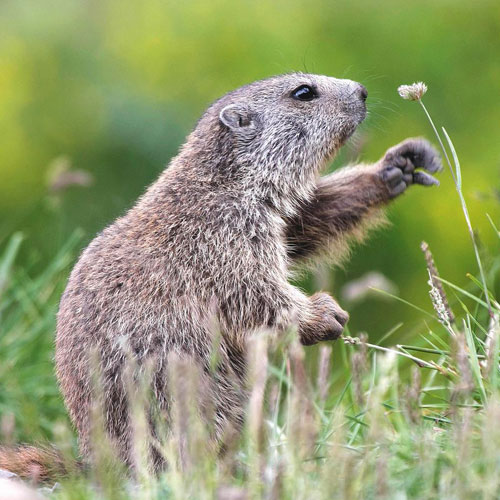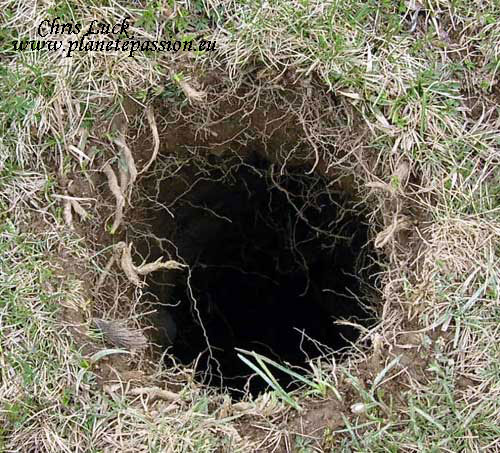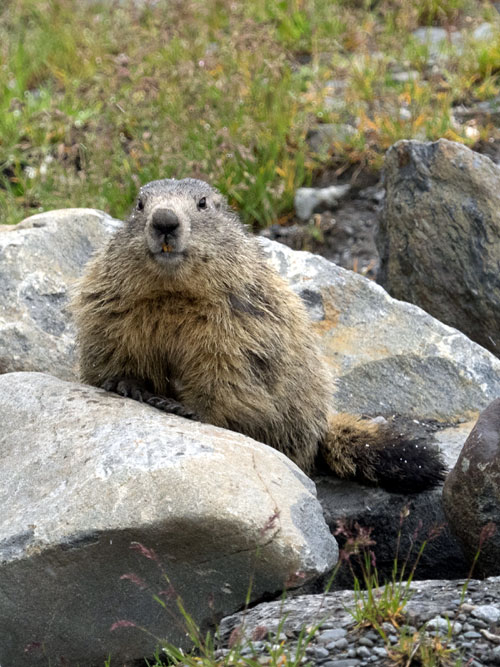


Marmot-Marmota-marmota- La-marmotte-des-Alpes
Marmots are medium sized
rodents that live throughout alpine areas of
They are about 50 to 60cm in length with adults weighing as much as 8kg prior to hibernation and as little as 2.5kg just after hibernation. They have a thickset squat body with a coat that is a mixture of blonde, reddish and dark grey fur and a short bushy tail which is darker as is the top of the head.
They have a short and
wide muzzle with the eyes almost parallel on each side of its head giving
them a wide field of vision which is of paramount importance if they are to
avoid predation when out of their tunnel complexes. They have powerful legs
and claws that enable them to burrow and tunnel in the stony and rocky soil
that often forms the alpine meadows. Small ears that are almost invisible
buried in their thick fur and like all rodents that live in burrows they
have long stiff
hairs growing around the mouth called
vibrissae in order to orientate themselves in the total darkness
underground.

They live in Alpine pastures in uncovered wide open
spaces where they can see their predators in the distance when they are
outside providing them with the opportunity to quickly rush to the nearest
tunnel entrance. One can often see an alpine marmot "standing" while it
keeps a look-out for potential predators or other dangers. Warnings are
given, by emitting a series of loud whistles to enable all members of a
colony to take cover.


They are diurnal and leave the burrow at dawn to feed. Although not totally vegetarian their diet is mainly composed of plants, (herbs and seeds), but they will happily consume spiders, worms, beetles and other insects.
From around the month of October when the temperatures start to drop the marmots will commence hibernation and will not wake up again until about the month of April making this one of the longest hibernation periods of any mammal when their body temperature descends to around 8°C and their heartbeat can reduce to twice a minute. As mentioned above their body weight can reduce by two thirds over winter and some starve due to loss of body fat.
Estimated life expectancy is between 15 and 20 years. Sexual maturity is reached rather late for a rodent because it is only at the end of their second year that they will be sexually mature.
Although they have quite a few natural predators such as fox, wolf, marten, some birds from the Crow family and Eagles they are not an animal that is considered threatened in France which is mainly due to the lack of human disruption in the places they inhabit other than people pursuing light leisure activities such as walking most of whom will appreciate seeing these rather charming rodents running around and standing upright to look around.




